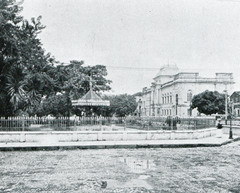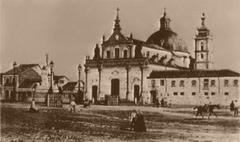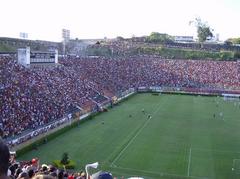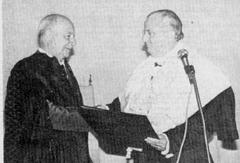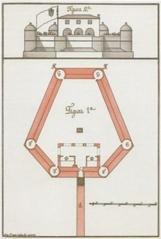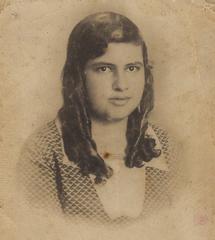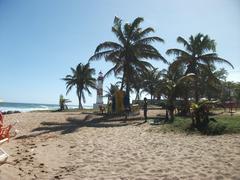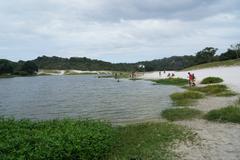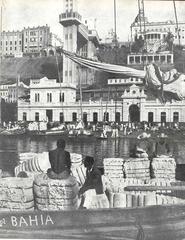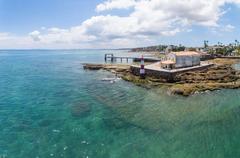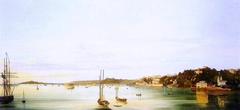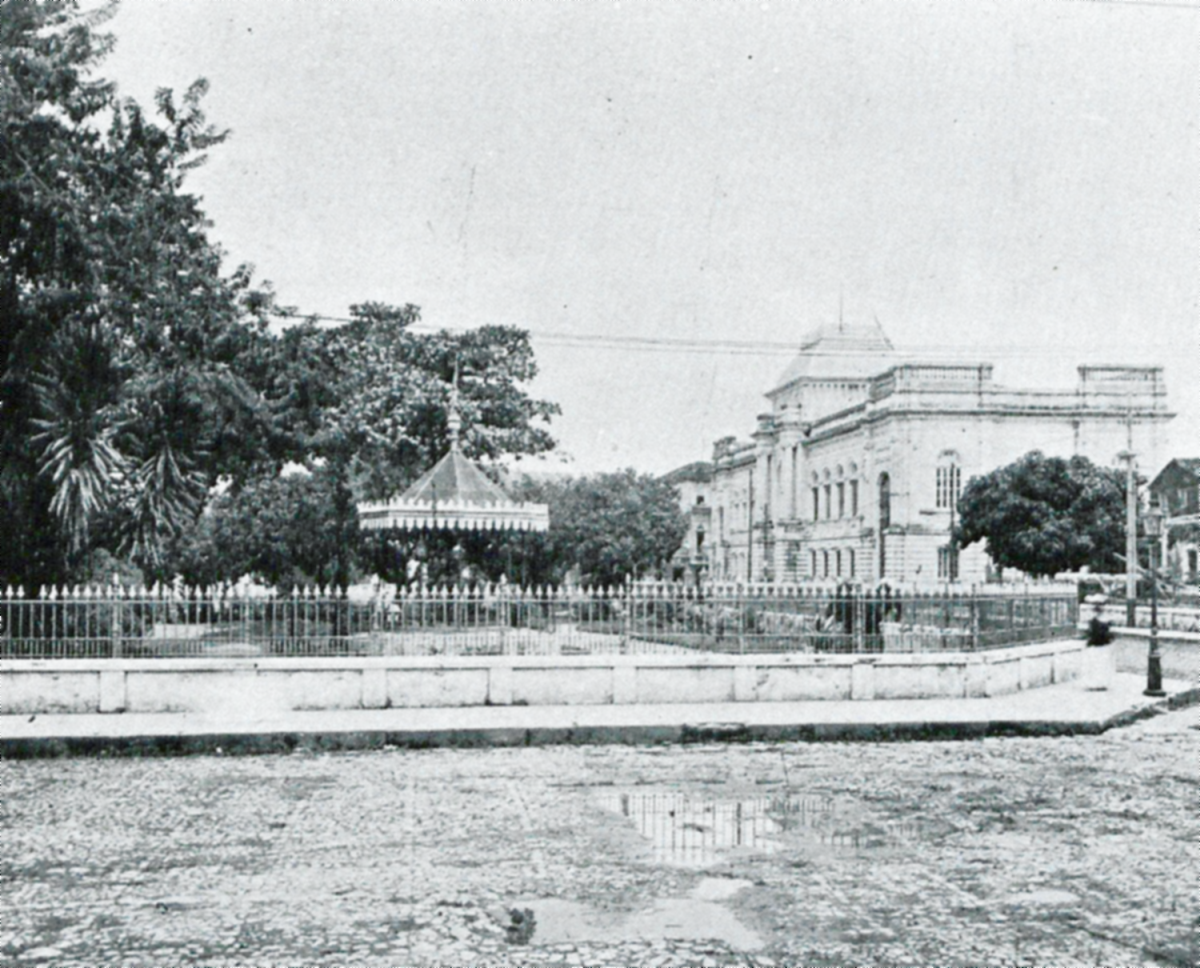
Comprehensive Guide to Visiting Praça Da Piedade, Salvador, Brazil
Date: 16/08/2024
Introduction
Praça da Piedade, located in Salvador, Bahia, Brazil, is an iconic public square that embodies the city’s rich cultural and historical heritage. As one of Salvador’s most significant landmarks, Praça da Piedade offers visitors a unique glimpse into the past, from its origins in the late 17th century to its role in pivotal historical events. This comprehensive guide aims to provide detailed insights into the square’s history, visitor information, and practical tips for making the most of your visit.
The area’s development began in 1679 when the land was donated by a devout woman to the Capuchin Friars of the Order of São Francisco, who constructed the Hospício de Nossa Senhora da Piedade (visiteobrasil.com.br). By the end of the 18th century, Praça da Piedade had become a notable site for public executions, including the 1799 execution of leaders of the Revolta dos Alfaiates, a movement for independence and social equality (wikiwand.com).
Significant urban development in the 19th century transformed Praça da Piedade into a popular spot for the city’s elite, thanks to improvements such as the introduction of the Jardim da Piedade and urban transportation systems (visiteobrasil.com.br). Despite periods of decline in the 20th century, restoration efforts have revitalized the square, making it a bustling area for both locals and tourists (wikipedia.org).
This guide will cover the square’s historical background, architectural highlights, and cultural significance, as well as practical visitor information and travel tips to ensure a memorable experience at Praça da Piedade.
Table of Contents
- Introduction
- Historical Background
- Visitor Information
- Travel Tips
- Frequently Asked Questions (FAQ)
- Conclusion
Historical Background
Early Establishment and Religious Significance
Praça da Piedade has a rich historical background that dates back to the late 17th century. Initially, it was outside the city limits and was donated by a devout woman to the Capuchin Friars of the Order of São Francisco. In 1679, these Italian Capuchins constructed the Hospício de Nossa Senhora da Piedade on the donated land, marking the beginning of the area’s development (visiteobrasil.com.br).
Execution Site and the Conjuração Baiana
By the end of the 18th century, Praça da Piedade had become a significant site for public executions. In 1799, it was the location where four leaders of the Revolta dos Alfaiates (Tailors’ Revolt), also known as the Conjuração Baiana, were executed. This revolt was a movement for independence and social equality, and the execution of its leaders marked a pivotal moment in Salvador’s history (wikiwand.com).
Urban Development in the 19th Century
The 19th century saw significant urban development in Praça da Piedade. In 1860, the square was a large open space with a marble fountain at its center, surrounded by modest houses and the Church and Convent of Nossa Senhora da Piedade. By 1870, the square’s importance grew with the introduction of urban transportation systems, including horse-drawn trams and later electric trams, which connected Praça da Piedade to other parts of Salvador (visiteobrasil.com.br).
In 1890, the square underwent numerous improvements, including the creation of the Jardim da Piedade in 1891, which attracted the elite of Salvador. By 1895, further renovations included the painting of kiosks and the repair of benches, making it a popular spot for the city’s upper class (visiteobrasil.com.br).
20th Century Decline and Restoration
The 20th century brought both decline and restoration to Praça da Piedade. During the 1970s and 1980s, the square experienced significant neglect and became known for its insecurity and deterioration. This period also saw the loss of the traditional camaleões (chameleons) that inhabited the area. However, restoration efforts eventually revitalized the square, transforming it back into a bustling area for locals and tourists alike (wikipedia.org).
Architectural and Cultural Landmarks
Praça da Piedade is home to several important architectural and cultural landmarks. The most notable is the Cathedral of Nossa Senhora da Piedade, which lends its name to the square. The Church of São Pedro is another significant religious site located within the square. Additionally, the Gabinete Português de Leitura, the Faculty of Economic Sciences of the Federal University of Bahia (UFBA), and the former headquarters of the State Department of Public Security are all situated in or near Praça da Piedade (wikiwand.com).
Visitor Information
Opening Hours and Tickets
- Opening Hours: Praça da Piedade is open to the public 24/7. However, the surrounding attractions and institutions may have specific operating hours.
- Tickets: Access to the square itself is free. Entry fees may apply for certain attractions, such as the Cathedral of Nossa Senhora da Piedade and the Gabinete Português de Leitura.
Guided Tours
Consider taking a guided tour to fully appreciate the historical and cultural significance of Praça da Piedade. Local guides offer detailed insights and stories that enrich your understanding of the area.
Special Events and Festivals
Praça da Piedade is a vibrant hub for local events and festivals, particularly during Salvador’s famous Carnival. Check local listings for events that may coincide with your visit.
Travel Tips
Safety
Although the square has been revitalized, always stay aware of your surroundings, especially during crowded events.
Photography
Praça da Piedade offers numerous photogenic spots, including the marble fountain and the historic architecture. Early morning or late afternoon light provides the best conditions for photography.
Nearby Attractions
Don’t miss nearby sites like the Mercado Modelo, the Elevador Lacerda, and Pelourinho, which are all within walking distance and offer a deeper dive into Salvador’s rich history.
Frequently Asked Questions (FAQ)
What is the best time to visit Praça da Piedade?
The best time to visit is during the dry season, from December to March, to enjoy pleasant weather and vibrant events.
Are there guided tours available?
Yes, guided tours are available and highly recommended to gain a comprehensive understanding of the square’s significance.
Is Praça da Piedade accessible for people with disabilities?
The square is generally accessible, but some surrounding attractions may have limitations. It’s advisable to check specific accessibility details in advance.
Conclusion
Praça da Piedade stands as a testament to Salvador’s rich historical and cultural tapestry, offering a unique experience for visitors. From its early establishment as a religious site to its transformation into a bustling urban square, it encapsulates centuries of Salvador’s development. Today, Praça da Piedade is not only a hub of historical landmarks but also a vibrant center for cultural events and local activities.
Visitors can explore its architectural marvels, such as the Cathedral of Nossa Senhora da Piedade and the Church of São Pedro, and partake in the local festivals that bring the square to life. Practical information on visiting hours, tickets, and safety tips ensures that travelers can make the most of their visit. Additionally, nearby attractions like Mercado Modelo and Elevador Lacerda offer further opportunities to delve into Salvador’s rich heritage.
Whether you’re a history enthusiast, a culture lover, or simply looking to explore, Praça da Piedade provides a comprehensive and enriching experience. Plan your visit to fully immerse yourself in the historical and cultural essence of Salvador, Brazil. For more information and updates, consider downloading our mobile app Audiala, checking out related posts, or following us on social media.
References
- visiteobrasil.com.br. (n.d.). Praça da Piedade. Retrieved from visiteobrasil.com.br
- wikiwand.com. (n.d.). Praça da Piedade. Retrieved from wikiwand.com
- wikipedia.org. (n.d.). Praça da Piedade. Retrieved from wikipedia.org
